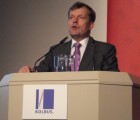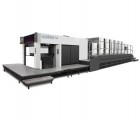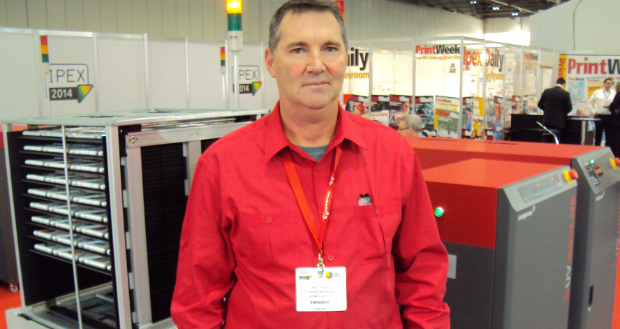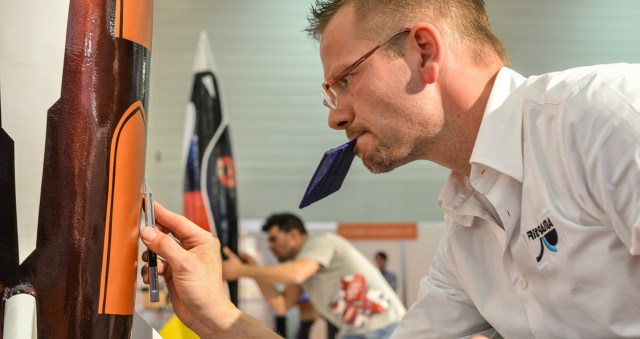
Profitable machines and systems for conventional post-press as well as for digital print processing will be a feature of the Kolbus exhibit. “Markets change continuously – it’s a challenge we have to meet with creative ideas,” says Kai Büntemeyer, managing partner of Kolbus GmbH & Co KG.
In addition to solutions based on high-performance machinery for conventional bookbinding and
finishing, Kolbus will be showing its new Bookjet concept, as a business model with enormous potential for publishing houses, the book trade and digital printers.
“The ongoing changes in postpress processing are a challenge that Kolbus is keen to take up,” continues Büntemeyer. “In our view, digital printing is a new business area that is clearly set for a successful future, but classic post-press processing will also continue to play a substantial role in our industry.”
Well into the early 1980s almost 100 per cent of Kolbus machines were built for hardcover book production; today the product portfolio is differently weighted with around 80 per cent of machines going to customers wanting solutions for non-classic hardcover production.
Around 20 per cent are installed with customers processing digital print products, while a growing share (currently around 10 per cent) is being sold into a market that is new for Kolbus, namely automated
production of packaging materials.
“In the print industry, the right equipment and machinery is the key to success and it takes considerable
experience and know-how to make the best choices,” says Büntemeyer. “It’s especially difficult for customers to evaluate how futureproof a machine investment is likely to be.
This is an area where Kolbus, a family-owned company located in north-western Germany, has a lot to
offer. Employing over a thousand people worldwide, the company thrives in supplying profitable machine configurations for industrial scale post-press processing.
Kolbus has 130 people working in its Technical Development department. Their grasp of customer
requirements and engineering know-how has repeatedly led to Kolbus setting standards and driving trends across the industry.
Büntemeyer makes a remarkable claim: “Thanks to the superiority of Kolbus technology, almost every book
produced worldwide comes into contact with a Kolbus machine at some stage in its production.”
This year’s drupa will generate new impetus and ideas for the book finishing sector, he predicts.
On the biggest-ever Kolbus stand at drupa – over 2000sq m – the stand team of around 100 employees and partners will be ready with information and open for in-depth discussions of visitors’
specific requirements.
Simply press ‘Book’ is the Kolbus answer for new and profitable business in the growth area of digital book
production. Photobooks are already a success story and other digital printing applications are opening up. The many machines in action on the Kolbus stand in hall 16 give visitors some idea of the comprehensive range of Kolbus machinery.
Bookjet is a key concept in digital post-print processing from Kolbus. The Bookjet concept changes the old approach to post-print processing in every way. A Bookjet, says Büntemeyer, is capable of producing books with different content and different numbesr of pages, not in batches, but one after the other. The number of pages can vary widely – the Bookjet can produce books of twenty, two hundred, or a thousand or more pages. One book after the other from web-based, inkjet digital printing; 1000 titles a day, millions of books a year – each book in a matter of seconds and with zero make-ready effort. Bookjet, he claims, is the solution for perfect, cost-competitive and profitable finishing of digital print products.
Visitorscan expect impressive demonstrations of the world’s fastest digital printing press heading up a complete production line for digital print products – where the starting point is the paper roll and the end product a finished book. The large format, inkjet digital printing press is a Timsons T-Press shipped from the UK.
In a fully automated, non-stop production line, the folded signatures from the press are transported in a shingled stream and processed sequentially by a Kolbus SF 832 sequential feeder. Simultaneous separation of single sheets via a number of feeders and magazines or sequential sheet-fed book block production from separate batch production will function equally smoothly.
The KOLBUS KM 200 perfect binder with its highly dynamic, servo-motor driven thickness adjustment, processes book blocks with thicknesses varying from two to sixty millimetres. Continuous automatic adjustment to the changing book thicknesses makes non-stop production possible. The fully automatic
HD 143.P three-knife trimmer trims three sides of the book blocks also in a continuous process with no make-ready effort. The line can be transformed into a photobook machine by adding an XHB 500 feed unit upstream of the KM 200 perfect binder to allow sequential single-sheet feed.
Comment below to have your say on this story.
If you have a news story or tip-off, get in touch at editorial@sprinter.com.au.
Sign up to the Sprinter newsletter



